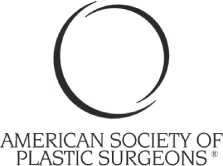Breast Reduction
Breast Reduction Surgery: Benefits, Risks, and Recovery

Lighter, Firmer, Confident – The Transformation You Deserve!
The weight carried, both literally and figuratively, when breasts are disproportionately large can significantly impact daily life, from physical discomfort to emotional strain. It’s a deeply personal experience, and considering surgical intervention is a decision that requires careful thought and thorough information.
If you’re exploring the possibility of Breast Reduction surgery, understanding the benefits of breast reduction, and the potential for improved well-being, alongside the necessary considerations for a safe recovery, is paramount.
Dr Faisal Salim, a highly skilled plastic surgeon, provides personalised breast reduction procedures. He recognizes the sensitivity of this journey, offering a supportive and informed approach to breast reduction tailored to each individual’s unique circumstances.
What is Breast Reduction Surgery?
Breast reduction surgery is a procedure that eliminates excess or extra breast tissue, fat, and skin to get a breast size that is more proportionate to the body. The goal is not only to enhance the aesthetic appearance of the breasts but also to relieve the discomfort that is caused by overly large breasts.
The procedure is commonly sought by individuals who experience:
- Chronic neck, back, and shoulder pain
- Skin irritation or rashes under the breasts
- Difficulty finding well-fitting bras and clothes
- Restricted movement during physical activities
- Poor posture due to the weight of large breasts
- Emotional distress or self-consciousness
Quick Fact Check! As per a study in Aesthetic Surgery Journal – Over 95% of patients reported major improvement in their quality of life post-breast reduction surgery. This highlights the procedure’s ability to positively impact both physical and emotional well-being. |
Surgical Techniques
Breast reduction surgery can be carried out using various techniques. It may depend on the size of the breasts, the amount of tissue to be removed, and the desired outcome
Common techniques include:
Liposuction Technique
In this approach, the surgeon begins by making small incisions in the skin, followed by the insertion of a thin tube (cannula) which is connected to a suction device. This removes excess fat and fluids from the breast. Liposuction is most effective for minor breast reductions and is ideal for women with good skin elasticity, as the skin naturally adjusts after fat removal. Compared to other surgical techniques, this method typically results in minimal scarring.
Inverted-T or Anchor Technique
Suitable for substantial reductions, in this technique, an incision is made around the areola, a vertical incision down to the breast crease, and a horizontal incision along the breast fold. It allows the surgeon the scope of extensive access for tissue removal and reshaping but may result in more noticeable scarring.
Lollipop Technique
This method involves a circular incision around the areola and a vertical incision down to the breast crease. It is often chosen for moderate to large reductions and offers a balance between effectiveness and scarring.
Consultation for Breast Reduction Surgery
The first step is to schedule a consultation with our board-certified plastic surgeon, Dr Faisal Salim. During this appointment, our surgeon will review your medical history, including any past breast-related conditions or procedures. A discussion about your family’s medical background may also be necessary.
Be honest about your reasons for seeking breast reduction. You should openly discuss any physical discomfort or emotional distress caused by your breast size, as well as any limitations on your daily activities.
The surgeon may take photographs, measure your breasts, and help determine how much tissue should be removed. The extent of the reduction varies for each individual, but most patients go down by one or two cup sizes.
Additionally, you will receive guidance on pre-surgery preparations and recovery expectations. A mammogram and breast examination may be required before proceeding with the surgery.
The surgeon will also inquire about your lifestyle habits, such as smoking and medication use. You may need to stop smoking for a brief span of time before and after the procedure to ensure proper healing. Certain medications, including aspirin and anti-inflammatory drugs, might need to be discontinued. Our surgeon will give you specific instructions custom-made to your case.
Preparing for Breast Reduction Surgery
Being in good health is imperative for a smooth recovery, so following your surgeon’s recommendations is crucial. This includes avoiding smoking and refraining from taking medications that can affect blood clotting.
To make your post-surgery recovery more comfortable, prepare your home in advance by having the following items ready:
- Sufficient ice packs
- Gauze, clean washcloths and towels
- Loose-fitting, comfortable shirts
- Surgeon-recommended creams or ointments for incision care
It’s also important to arrange for transportation to and from the procedure. If you’re not staying in the hospital overnight, ensure someone is available to stay with you for at least the first night to assist with your initial recovery.
Benefits of Breast Reduction Surgery
Breast reduction surgery offers a myriad of physical, emotional, and psychological advantages.
Some of the key benefits of getting a breast reduction include:
1. Relief from Physical Discomfort
Women with excessively large breasts often encounter problems like chronic neck, back, and shoulder pain. The surgery alleviates these issues, promoting a pain-free lifestyle.
2. Improved Posture and Mobility
Large breasts can cause poor posture and spinal misalignment, leading to long-term orthopedic concerns. Reduction mammaplasty corrects posture, making activities like exercising, running, and even simple daily movements easier.
3. Freedom from Skin Irritation and Rashes
The excessive weight and size of large breasts often cause rashes, chafing, and fungal infections in the breast crease, especially in warm and humid climates. A reduction procedure eliminates these discomforts.
4. Enhanced Physical Activity
Many women with large breasts struggle with exercise due to restricted movement and excessive bouncing. Post-surgery, they can comfortably engage in fitness activities, leading to a healthier lifestyle.
5. Boost in Self-Confidence and Mental Well-being
Many women feel self-conscious, socially anxious, or emotionally distressed due to their large breasts. A reduction procedure enhances self-esteem and helps them feel comfortable in their own skin.
6. Improved Clothing Fit and Fashion Choices
Finding well-fitting clothes and bras is a common struggle for women with large breasts. After breast reduction, they can wear better-fitting clothes and explore different fashion choices without discomfort.
Breast Reduction Bra: Why is it important?
A breast reduction bra is an essential post-surgery garment designed to provide support, compression, and comfort. It aids in healing and prevents post-operative complications.
Here’s why it is crucial:
Provides Support to Healing Tissues
After surgery, the breast tissues need proper support to heal correctly. A post-surgical bra reduces swelling and fluid buildup.
Prevents Excessive Movement
Excessive breast movement during recovery can cause pain and complications. A specialized bra ensures stability and minimizes discomfort.
Reduces Post-Operative Scarring
A well-fitted reduction bra keeps the incisions secure, preventing unnecessary stretching that could lead to widened scars.
Enhances Comfort and Post-Surgery Recovery
These bras are made up of soft, breathable materials to avoid irritation and provide all-day comfort during recovery.
Risks Involved in Breast Reduction Surgery
While breast reduction surgery is generally deemed safe, it comes with certain risks and complications, like any surgical procedure. Understanding these risks helps patients make an informed decision.
Scarring
All surgical procedures leave behind some degree of scarring. While Dr. Faisal Salim employs advanced techniques to minimize scarring, patients should follow post-operative care instructions to ensure optimal healing.
Changes in Breast and Nipple Sensation
Some patients may witness temporary or permanent loss of nipple and breast sensation due to nerve damage during surgery.
Asymmetry
While every effort is made to achieve perfect symmetry, slight variations in breast size or shape post-surgery may occur.
Potential Difficulty in Breastfeeding
Some women may lose the ability to breastfeed after breast reduction due to glandular tissue removal, though many retain normal function.
Infection and Bleeding
As with any surgery, there is a risk of infection, excessive bleeding, or poor wound healing. Choosing a well-experienced surgeon like Dr Faisal Salim significantly reduces these risks.
Fat Necrosis
A rare but possible complication, fat necrosis occurs when fatty tissue in the breast dies due to inadequate blood supply, leading to lumps or firmness.
Recovery After Breast Reduction Surgery
Breast reduction recovery requires patience, care, and adherence to post-surgical guidelines.
Here’s a step-by-step overview of what to expect regarding recovery after breast reduction:
1. Immediately After Surgery
- Patients will be monitored in a recovery room before being discharged (usually within the same day or after 24 hours).
- Surgical drains may be placed to drain out the excess fluid.
- A compression bra will be provided to support healing.
2. First Week of Recovery
- Pain and swelling are expected; prescribed pain medications help manage discomfort.
- Rest and limited movement are crucial during this period.
- Avoid lifting, stretching, or any strenuous activities.
3. Two to Four Weeks Post-Surgery
- Most patients can resume light daily activities after two weeks.
- Stitches (if not dissolvable) may be removed around two weeks post-surgery.
- Swelling and bruising start to subside.
- Continue wearing a compression bra for proper support.
4. Six to Eight Weeks Post-Surgery
- Most patients return to work and normal activities (excluding strenuous workouts) around this time.
- Light exercises like walking can be resumed.
- Scars start fading, but complete scar maturation takes up to a year.
5. Three to Six Months Post-Surgery
- By this time, most of the swelling is gone, and patients can appreciate the final results.
- Patients can transition to normal bras but should opt for well-fitted, non-underwired bras.
- Regular follow-up appointments are a must to monitor healing.
Results Expected
Breast reduction surgery can significantly alleviate discomfort in the upper back, neck, and shoulders. It may also enhance mobility, making physical activities easier, while contributing to improved self-confidence and body image.
Although the results are noticeable immediately, swelling may take several months to fully subside, and surgical scars will gradually fade over time. While the outcome is generally long-lasting, factors such as aging, weight fluctuations, and pregnancy can alter breast size and shape in the future.
Dr Faisal Salim: Personalised Breast Reduction Procedures
When considering breast reduction surgery, selecting the right surgeon is crucial. Dr. Faisal Salim is a leading expert in cosmetic and reconstructive breast surgery. Here’s why he stands out:
Customised Approach
Dr Faisal Salim tailors each procedure to the patient’s unique anatomy, aesthetic goals, and medical history, ensuring the best possible outcome.
Advanced Surgical Techniques
He employs modern surgical methods, including minimal scarring techniques, to achieve natural-looking results.
Comprehensive Pre- and Post-Operative Care
From the initial consultation to post-operative follow-ups, Dr. Faisal Salim provides comprehensive guidance throughout the patient’s journey.
Focus on Patient Safety
With dedication towards safety, precision, and patient satisfaction, he ensures optimal results while minimizing risks.
Experience the unmatched benefits of breast reduction surgery with Dr Faisal Salim!
Breast reduction surgery offers a life-enhancing transformation, alleviating discomfort and improving confidence. While there are risks involved, choosing an experienced and skilled surgeon like Dr Faisal Salim can help minimize complications and ensure a smooth recovery with beautiful, natural-looking results.
If you’re considering breast reduction surgery, schedule a consultation with Dr Faisal Salim today to explore how a well-planned approach can help you achieve the comfort, confidence, and balance you deserve.
Some Quick FAQs
Anyone experiencing physical discomfort, skin irritation, or emotional distress due to overly large breasts may be a good candidate.
Scarring is inevitable but fades over time. Surgical techniques aim to minimize their appearance.
Yes, depending on the technique used, some women may experience difficulty breastfeeding post-surgery.
The amount varies based on individual needs, but most patients go down by one or two cup sizes.
Pregnancy, significant weight gain, or hormonal changes can alter breast size over time.








